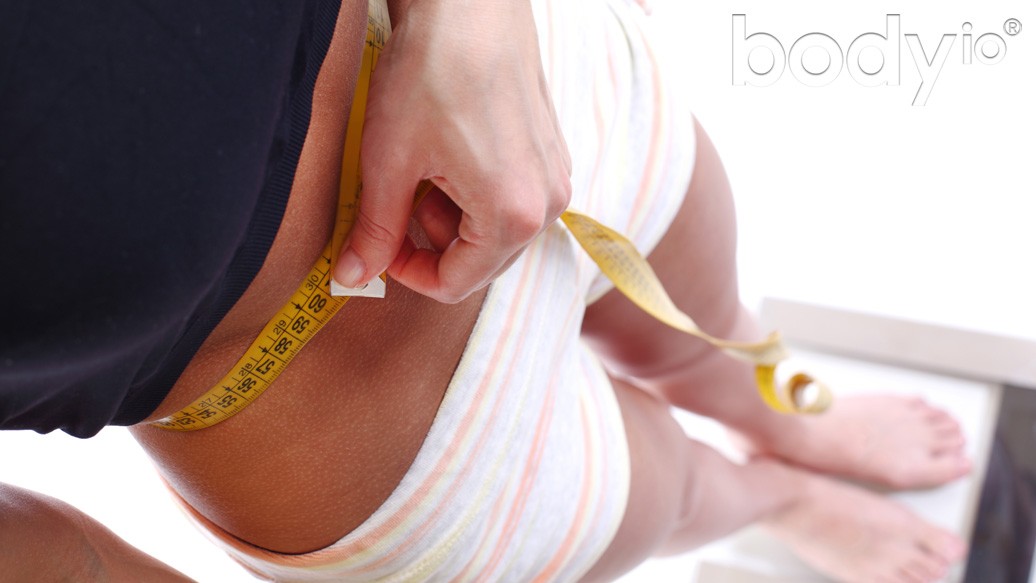any people set out to improve their health and fitness, lose weight and transform their physique, but fail to do one very important thing – track their progress. Either they are confused about how to track their progress or they simply overlook how important that data might be when establishing if their strategy is actually working or not. Any coach will tell you that tracking this data is essential. I get a lot of questions about tracking progress. This article is a three-part series that will answer the most common questions.
Part One is about the most common ways to measure body composition and progress. In Part Two, I will elaborate on how different personality and body types might prefer a combination of different methods to measure their progress. In Part Three, I will discuss how you can apply these methods, what you can expect, and what you should be aware of when tracking your progress.
The Most Common Ways to Measure Body Composition and Progress
Dual Energy X-ray Absorptiometry (DEXA)
DEXA scans are considered to be the gold standard for body composition analysis due to their accuracy, reliability and the fact that they measure three components: fat, muscle and bone. Nowadays, they are increasingly available in most urban/developed areas.
For clients who have health risks and need to greatly reduce visceral fat, a DEXA scan is ideal. DEXA scans are primarily used for bone mineral density readings, another important aspect of health, especially for aging women.
Hydrostatic Weighing
Hydrostatic weighing (underwater weighing) is also considered a gold standard for measuring body composition, but most people don’t have access to these devices. If you do have access and it’s in your budget, I think it would be cool to give it a try. Keep in mind that even this gold standard is subject to error due to the fact that any oxygen left in the lungs (after exhalation) can skew the numbers. An average of several readings is taken for accuracy, but this process is said to be somewhat time-consuming and can be frustrating.
Bod Pod
The Bod Pod is whole-body air displacement plethysmography. It relies on the same concept as hydrostatic weighing, but uses air instead of water. This method has become more popular, but still tends to be less accessible/affordable for most people. Error rates are similar to that of hydrostatic weighing.
Bioelectrical Impedance
Tanita scales are the most commonly known bioelectrical impedance scale. Tanita claims that their readings are accurate within +/- 5% of DEXA scans. I would like to believe that, but in my personal experience, I have seen some questionable Tanita scale readings, especially with cheaper home versions.
I’ve witnessed big swings in readings based on hydration status, time of day, digestion, and other variables. I’ve even seen discrepancies between my own two readings taken within minutes of one another. If you’re going to use a Tanita scale, be sure to use it under the same conditions (fed/unfed, etc.), at the same time of day, and don’t rely solely on the accuracy of this data.
Calipers
Caliper measurement accuracy is only as good as the technician using them. The more experience the better (in most cases). That being said, I have had caliper measurements simultaneously taken by two different “experienced” technicians that resulted in a 5% BF discrepancy. One could argue that as long as the same technician is taking the caliper reading, then the “progress” should be accurate, and I would agree. However, I wouldn’t be hyper-focused on this actual number, nor would I use this method of tracking solely on its own.
Girth Measurements
Girth measurements are one of my favorite progress tracking methods and I think everyone should use this method, regardless of which others you choose to use. It’s important to make sure that you’re taking the measurements in the exact same sites with each reading. How you stand is sometimes overlooked and can skew the numbers. For example, standing with your feet together vs. your feet at shoulder width will skew the hip measurement, so always stand with your feet together. I take my measurements monthly at the same time of day (when I wake up). Entering girth measurements into an online BF% calculator is also an option. Personally, I don’t find this method to be very accurate, especially if you have uneven fat distribution patterns. However, even if your total BF % is not accurate, comparisons over time can still be a good measure of progress.
Progress Photos
Progress photos are essential, in my opinion. I didn’t say they were fun or that I like taking them (most people don’t), but if you don’t take them, you’ll regret it. Take monthly photos in three positions (front, back and side) while wearing undergarments/swimwear, without using any funky filters, lighting or angles.
The Scale
The scale has gotten a bad rap over the past few years. Ditch the scale because it lies! Wait just a second… Give the scale a break. It’s only doing what it is supposed to do, which is to tell you how much you weigh. The scale doesn’t tell us how many inches we’ve lost, nor does it tell us our body composition breakdown, how we look and feel, or what our health status happens to be. If we keep this in mind, we can learn to use the scale when appropriate and, most importantly, experience why the number on the scale doesn’t deserve an emotional overreaction.
Clothes, the Mirror & How You Feel
How do your clothes fit? How do you look? How do you feel? These three simple questions that we can ask ourselves are often overlooked and underestimated. The scale might not be budging, but your clothes may feel looser and you can see that your posture has improved. Most importantly, how do you feel? If you feel like crap, then maybe chasing a number using other forms of data is irrelevant.
Stay tuned for Part 2, where I discuss what combination of tracking methods might work best for you.












